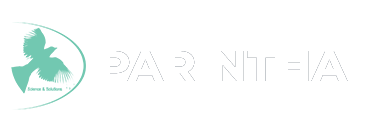
Iron is a critical nutrient for human health due to its vital roles in oxygen transport, cell division, and gene function (expression). It exists in two forms in food sources:
- Heme iron (iron from non-vegetarian sources) and
- Non-heme iron (iron from vegetarian sources).
Iron from non-vegetarian source, primarily found in animal products such as meat, fish, and poultry, is more efficiently absorbed by the human body compared to vegetarian source, which is derived from plant sources and fortified foods.
Iron Bioavailability and Absorption
- Non-vegetarian iron sources: Absorbed at a rate of 15% to 35% from animal sources. It is relatively unaffected by dietary factors and contributes significantly to total iron intake.
- Vegetarian iron sources: Absorbed at lower rates (2% to 20%), primarily from plant sources such as grains, legumes, and vegetables. Its absorption can be enhanced or inhibited by other dietary components.
Factors Influencing Iron Absorption
Enhancers:
- Ascorbic Acid (Vitamin C): Improves iron absorption from vegetarian sources by converting it to a more absorbable form.
- Meat, Fish, and Poultry: Significantly enhance iron absorption from fruits, vegetables, and grains when consumed together.
Inhibitors:
- Phytates: Found in cereals such as wheat, rice, maize, and millet; inhibit iron absorption from vegetarian source by binding to iron and forming insoluble complexes.
- Polyphenols: Present in tea and coffee, can also inhibit iron absorption from vegetarian source.
- Calcium: Found in dairy products, can inhibit iron absorption from vegetarian sources.
Other Factors:
- Iron status: Iron absorption can vary depending on the body’s current iron stores. Individuals with low iron stores absorb more iron from food compared to those with sufficient iron levels.
Iron in Plant-Based Diets
- In countries such as India, where plant-based diets are common, non-heme (veg) iron constitutes 91% of the total iron intake.
- The abundance of phytates and polyphenols in plant-based diets can hinder iron absorption from vegetarian sources, making individuals in India more susceptible to iron deficiency anemia.
Health Implications
- Iron Deficiency Anemia: A major health issue worldwide, resulting from inadequate dietary iron intake and absorption.
- Iron-Rich Foods and Cooking Methods: Consuming non-vegetarian iron-rich foods and cooking with cast iron pots can help increase iron intake and absorption.
Maintaining a balanced diet as well as factors that enhance iron absorption, is essential for preventing iron deficiency and promoting overall health.
- Cochrane Database Syst Rev. 2016 Apr; 2016(4): CD009747.
- Biochemistry, Iron Absorption. Treasure Island (FL): StatPearls Publishing; 2024 Jan.
- Dietary Iron. Treasure Island (FL): StatPearls Publishing; 2024 Jan.
- ACS Omega. 2022 Jun 21; 7(24): 20441–20456.
- Crit Rev Food Sci Nutr. 2000; 40(5): 371-98.
- Fed Proc. 1983; 42(6):1716-20.
- J Am Diet Assoc. 1988; 88(7):786-90.Am J Clin Nutr. 2008; 87(4):881-6.
